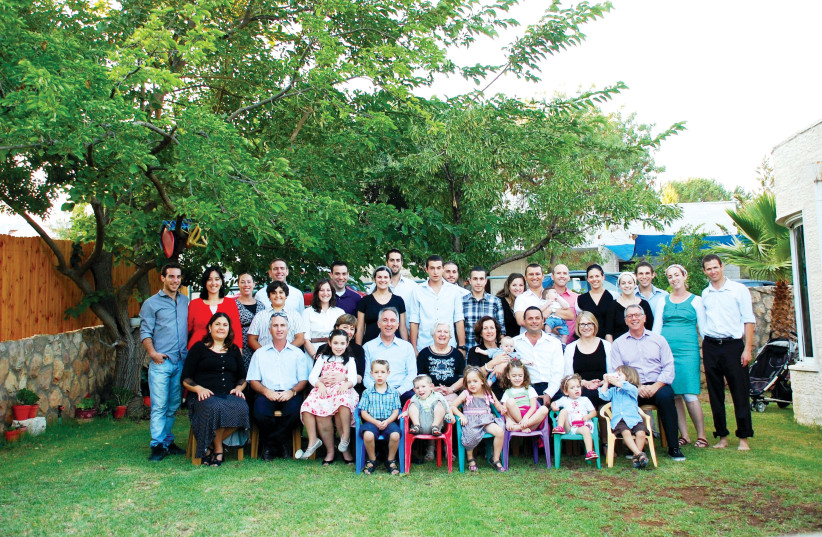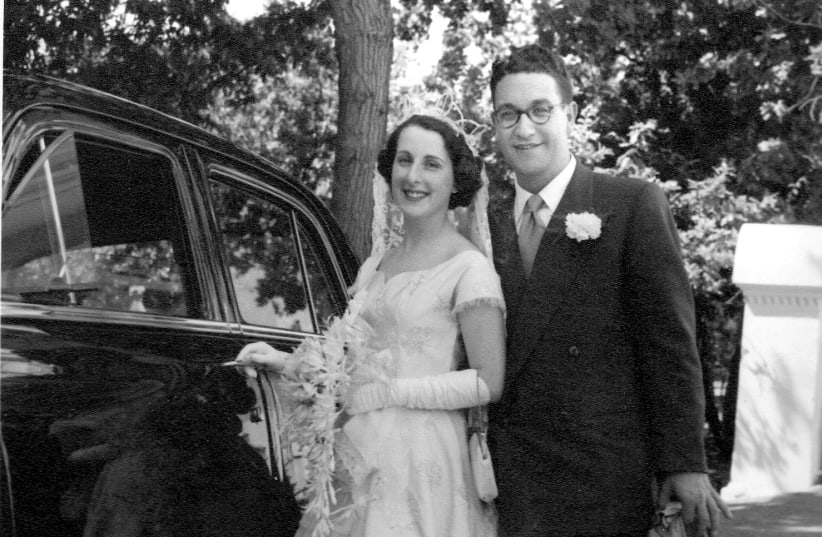A number of months ago, Herb Keinon wrote a touching Magazine piece detailing his thoughts and feelings at the conclusion of reciting Kaddish (mourner’s prayer) and leading the weekday prayers, following the passing of his father. Many of Herb’s emotions rang true as a bell, and it occurred to me that this filial 11-month tradition contains so many facets. So having ended my stint following my mother Leonore’s passing, here are some other angles and observations on this emotive subject.
The Orthodox tradition of chiuv (obligation) of a son-in-mourning to lead the tri-daily services while saying Kaddish still puzzles me.
Citing the ancient sages, the Shulchan Aruch (Code of Jewish Law) states that when a son serves as the shaliach tzibbur (the person who leads the congregation in prayers), he fulfills the commandment of honoring his parent by sanctifying his or her soul and alleviating its suffering in gehenom (the afterlife). I will desist from questioning their divine source of information.
The many questions about Kaddish
But what happens when there is more than one mourner in the same minyan? Given my mother’s laid-back, considerate nature, I reckoned her soul would be enhanced by my waiving in favor of others, subscribing to Rabbi Avraham Yosef’s sage advice. When asked “What does one lose when allowing someone else to lead the prayers?” he answered, “One never loses when letting someone else lead.”
Therefore through this time, I obligated myself to lead when needed, which given my community’s small weekly minyan and the fact that blessedly, no parents passed away until toward the end of my stint, was pretty incessant. Given my slow pace, I also, for the most part, declined to lead on Monday and Thursday mornings, much to the relief, I believe, of the faster-paced regulars.


Unless you have been there, it is difficult to understand the energy needed to complete this obligation. There is the constant requirement of punctuality, and physical and vocal demands. But all of these pale in comparison to the mental concentration and spiritual intent essential to fulfilling one’s duties with respect and honor.
When you are sitting among the congregation, you can afford to drift off in thought here and there. But as the prayer leader, you cannot slip away, even for a second. The pressure is relentless, the texts repetitive, and the expectations high. Yes repetitive, but nuanced too. The seven Kaddish recitals in the morning prayer include four different versions. That alone is enough to keep you on your toes.
An additional aspect is the preference that all the mourners recite the Kaddish at the same pace, thereby allowing the congregation to respond in unison. Thus, when other mourners are in attendance, you have to be cognizant of their pace and progress.
I found myself smiling at the end of the services at the salutations offered. No “Good job” or “Thanks” from our commune with its sky-high expectations. Rather, the ultimate salute is “Yisha’ar koach” for the Ashkenazim and “Chazak u’baruch” for the Sephardim. Both focus on the hope that one should have the strength to continue serving the community!
IN AN attempt to give more reason to the rote, I did some reading on the subject of Kaddish, and as a result, made a few very personal, unauthorized changes in the way I recited the text (don’t try this at home!). First, given the long-term suffering of both of my parents, I borrowed from other communities’ texts and added to my Ashkenazi version, the adjective tovim (good) to the word chaim (life). To my amazement, over the thousands of times (you can check the math) I made this addition at many venues, I received only one single comment on this add-on!
Although the corresponding “Amens” are not necessarily meant to signal a punctuation mark as in a full stop, effectively, that is, de facto, what they have become, thus impairing the sense of the first two sentences. I therefore adopted the practice of pausing before the word “ve’yamlich,” in order to indicate a separation.
On this variation I received zero comments. I cannot believe that nobody noticed the change in rhythm. Rather, I think that my fellow congregants did not think my change significant enough to take me up on it. The same applies to the break between lines four and five, which to my mind should read as one sentence.
I experienced a surprising, redemptive moment in the course of the year. One Thursday afternoon, I found myself in a small village with a single, Yemenite shul. The Yemenite tradition does not include the mourners’ Kaddish in its afternoon service, but I was assured that if I informed the congregants in advance, they would allow me to recite it at the end. However, when I approached one of the prominent-looking gentlemen, I was met with flat refusal. And that is how I broke my 100% score up to that point.
That upcoming Shabbat we were visiting our daughter and family in Beit Shemesh, and as usual I attended the wonderful services at the welcoming Datit Leumit community. The Mincha service (afternoon prayer) was conducted by a Sephardi gentleman, which meant that the mourners’ Kaddish was recited before the Aleinu prayer.
As I completed the recitation together with a number of other mourners, one of the gaba’im (a person who assists in the running of synagogue services) informed me of the community’s tradition that in that case, the Ashkenazim recite an additional Kaddish after Aleinu. And so it was that through magical coincidence or cosmic bashert, I made up for the missing Kaddish.
I missed a few more but had one of my brothers cover for me in addition to my sister, who diligently recited Kaddish once a day. And just once, after an early Mincha and a hectic evening, I woke up the next morning, realizing that I had completely forgotten to attend Ma’ariv (prayer service held in the evening or night.)
Then just four days before the conclusion of the cycle, I got a chill. As a responsible citizen, I did the COVID test and got the dreaded two red lines, thus having to remain housebound. Fortunately, I tested negative just before the very last Kaddish service and so experienced closure.
Besides honoring my dear mother, I have strengthened my connection with Am Yisrael. Attending services across the range of traditions, it seems to me miraculous, given the length and diverse geography of our dispersion, that our prayer texts have remained remarkably similar. And the perfect example is the Kaddish.
Respect to the Sephardim for having a slightly lengthier version. Respect to the Ashkenazim for pausing patiently while the Sephardim catch up so that we retain our customs, yet remain in unison with each other.
Now, all that is left for my siblings and me to do is to relate to our children and grandchildren the wonderful stories and personas that our parents left indelibly tattooed in our minds. In that way, we will be honoring their memories, adding to our appreciation of the lives they gave us, and gifting our offspring values and traditions that will serve them well. ❖
The writer produces heritage films for people who want to pass on their stories and values to future generations.
